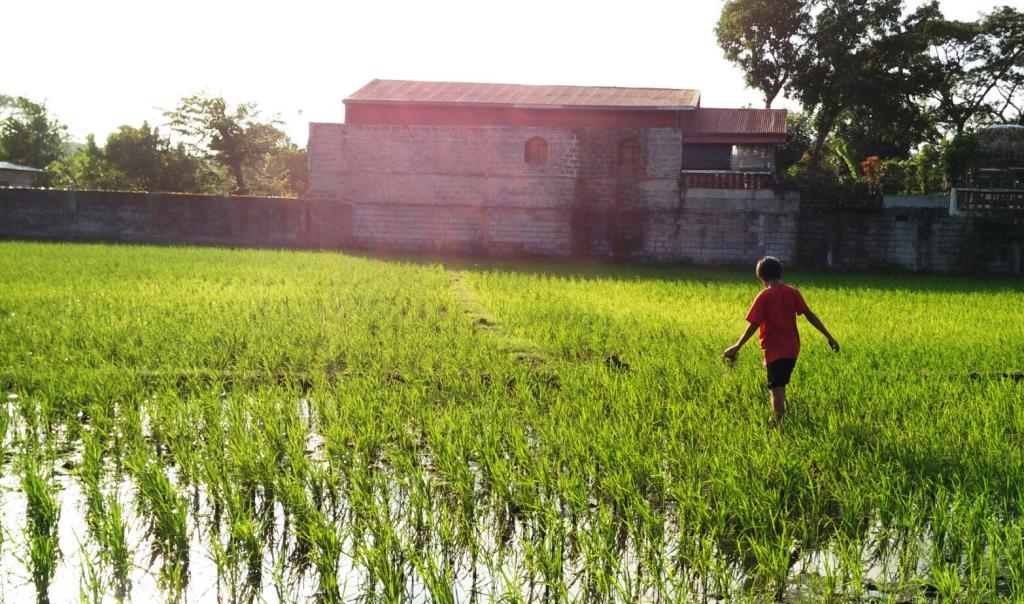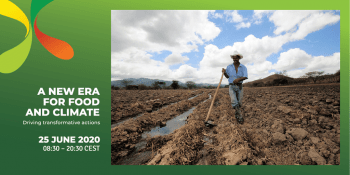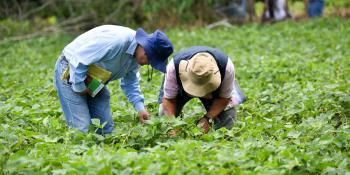Farming communities learn about climate-smart agriculture for rice through students

Young people have helped bring information on climate-smart agriculture for rice to rice-farming communities in the Philippines.
The world just spent its resource allowance for 2016 almost five months before the end of the year. Earth Overshoot Day, pinpointed at 8 August 2016, marks the time when the world starts consuming more than the resources it can regenerate in a year. Sustainable development is now promoted in providing not only for the present, but also the future generations.
Different sectors, such as health, energy and infrastructure, contribute to sustainable development. Agriculture is a sector that can directly affect the environment and natural resources. However it also puts great pressure on resources due to the demands of a steadily increasing population and a fixed area of land for growing crops.
More efficient and sustainable agricultural production is needed to ensure food security for communities. Aside from working with communities, the government and other organizations to improve current farming systems, the youth (the future farmers, workers, leaders) should also be encouraged to join such efforts.
The Philippine Rice Research Institute (PhilRice), with the support of the Department of Education of the Philippines and the CGIAR Research Program on Climate Change, Agriculture and Food Security in Southeast Asia (CCAFS SEA), has a campaign for engaging the youth in agriculture.
In the Infomediary Campaign, high school students are tapped to serve as information providers on climate-smart agriculture for rice (CSA4Rice) to farming communities. Aside from the basics of rice farming and climate change, they are taught how to access platforms to get agricultural information, which they could pass on to the larger farming communities.
Teaching CSA4Rice to high school students
Recently, the Infomediary team looked at how CSA4Rice is being taught to students of three secondary schools as part of the campaign. Focus group discussions with the teachers and school officials, and surveys of the students under the campaign were conducted. An important finding was that teachers must use different tools and strategies in specific contexts, and avoid one-size-fits-all approaches, in teaching CSA4Rice to the students.
Visual media, such as pictures and videos, educated and entertained students at the same time. These were the most preferred teaching tools across the three schools. However, one still has “to be critical in assessing which of these methods can work in a given community,” according to the authors of the study, Mr Jaime Manalo IV, Ms Katherine Balmeo, Mr Jayson Berto, Mr Fredierick Saludez, Ms Jennifer Villaflor and Ms Argie Pagdanganan.
Videos in particular could put a lot of pressure on local resources because not all schools have access to electricity. Posters could be good resource materials, especially for schools that do not have projectors for slideshow presentations. Strong student involvement, as in school programs which engage students, is also an important factor.

One of the students under the Infomediary Campaign in their school's rice plot. Having such plots helps the students understand the lessons in rice farming. Photo: A. Cruz (CCAFS)
Aside from the teaching tools and strategies, other factors which influence CSA4Rice integration in secondary schools include the surrounding community of the school (i.e. students in predominantly agricultural communities are more motivated to learn about rice farming than in non-agricultural areas), and the support from key school officials. Teachers who have agriculture-related backgrounds, strong interests in CSA4Rice and are innovative in their teaching strategies are oftentimes successful as well in teaching CSA4Rice.
Schools can also look at external institutions, such as the mass media (including newspapers, radio, television, internet and mobile phone platforms) and other organizations which provide information on CSA4Rice, to reinforce CSA4Rice lessons taught by the teachers.
Packaging the CSA4Rice messages
In terms of packaging the messages, the team found that more general sets of information could be more successfully passed on from the students to the farmers. This is because students understand more general knowledge, like the basics of climate change, as opposed to more technical information and how-to’s.
The researchers recommend, “The more complex information can perhaps be better handled by their teachers and passed on to the farmers in the community using other media… or other forms of information dissemination activities.” They also found that students would more likely understand topics explained in detail. In discussing the technical topics, like mitigation and adaptation, more in detail and exercises providing practical examples are useful.
However, consistent with the other findings is that students have different capacities when it comes to learning. Students from rice-farming households can be expected to share information on the more complex farming topics, and even convince their parents to try other technologies.
Integrating climate change information and climate-smart agriculture for rice into the school curriculum is one way to involve the young people in agriculture towards a sustainable future. Initiatives like the Infomediary Campaign support farming communities cope with climate change and at the same time train the future generation of farmers.
Read more:
- The Infomediary Campaign: Reinventing instruction approaches to win young people’s minds
- Climate change in the eyes of the youth
- Mobilizing the school youth as source of climate information
Amy Cruz is the junior communications specialist for the World Agroforestry Centre Philippines. She is also a communication consultant with the CCAFS SEA program.



